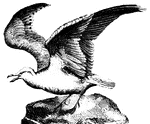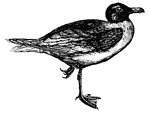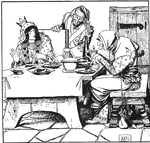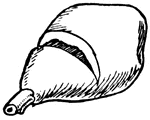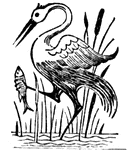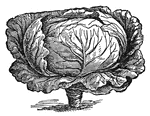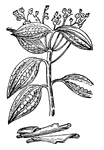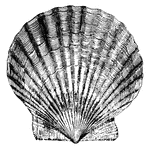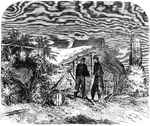
Rice
Rice is a food staple in more than 39 countries. There are many different varieties of rice. They vary…
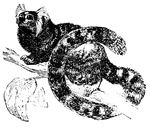
Marmoset
The marmosets are distinguished from other monkeys by their sharp and crooked claws. They are skillful…

Striped Hyena
Hyenas look like dogs, but are more closely related to cats and civets. Their front legs are longer…
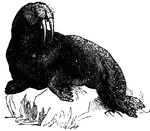
Walrus
This sea mammal is known for the great length of the canine teeth of the upper jaw, sometimes reaching…
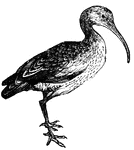
Curlew
These birds are characterized by their curved beaks. Their food consists of insects, worms, slugs, aquatic…

Clam
this is the common round clam of the Atlantic coast found from Texas to Cape Cod. It is frequently seen…

Loon
The loon is a diving bird that finds its food under the water. It will dip its bill into the water and…
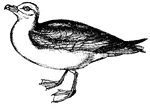
Petrel
Petrels never dive, and rarely swim. Instead they skim rapidly over the waves looking for food.
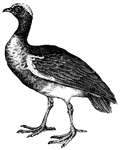
Screamer
Screamers live near moist marshy locations or sandy streams. They do not swim, but walk along the vegetation…
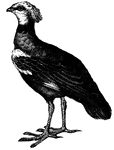
Screamer
Screamers live near moist marshy locations or sandy streams. They do not swim, but walk along the vegetation…
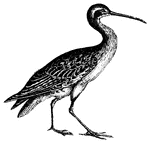
Curlew
These birds are characterized by their curved beaks. Their food consists of insects, worms, slugs, aquatic…

Lesser Spotted Woodpecker
It is not only to seek for food that Woodpeckers make holes in trees, but also to establish their nests,…

Arrowroot
The name, Arrowroot, comes from a starch derived chiefly from the roots and grains of several plants…

Catfish
Catfish are found in lakes and streams of North America, usually at muddy bottoms. Catfish have a large…
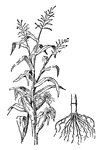
Indian Corn
Indian Corn or Maize is a well known species of cereal. It is used as food and is gathered in October…

Lyman J. Gage
Became president of the First National Bank and was secretary of the treasury under McKinley.
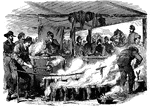
Cooking in Camp
The kitchen of the Fremont Dragoons at Tipton, Missouri. Tipton, which is 38 miles from Jefferson City,…

Great Bakery
"The Great Bakery for the United States Army at the Capitol, Washington, D. C.- sketched by our special…

Battle at Potomac
"Engagement between the Federal troops and the Confederates on the Virginia side of the Potomac, opposite…

Douroucouli Monkey
"N. trivirgatus. Its generl color is gray: its body and head measure ten inches. It lives on…

Landing at Parkersburg
"Landing of Federal troops at Parkersburg, Western Virginia. Parkersburg, Va., in 1861 was a thriving…

Camp Zagonyi
"Camp Zagonyi, encampment of Fremont's army on the prairie, near Wheatland, Mo., October 14th, 1861.…
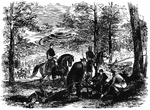
Battle of Corrick's Ford
"Battle of Carrick's Ford, Western Virginia- discovery of the body of General Garnett, by Major Gordon…

Red Snapper
"The Florida or Pensacola red snapper is it is commercially known, because that city is headquarters…

Blue Crab
"Several species of crabs are taken from Florida coastal waters, probably the most common being the…
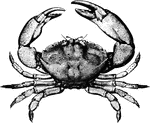
Stone Crab
"Stone crabs are popular with Floridians and Florida visitors, and are featured on restaurant and hotel…
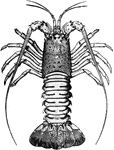
Crawfish
"Also known as Florida lobster. This Southern species, a "spiny" lobster, found off the southern Florida…

Masquerade of War
"The Masquerade of War. Ingenious method of disguising the masts and hulls of Commodore Porter's morter…

Battle of Antietam
"Battle of Antietam, Burnside's Division, left wing- brilliant and decisive bayonet charge of Hawkins's…
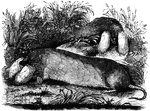
Pouched Rat
"Is of a reddish-brown color above, and dark-brown below; the body, which is stout and cylindrical,…
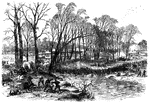
Battle of Stone River
"Battle of Stone River, Tenn. The decisive charge of General Negley's division across the river- the…

Butchering Cattle
"Butchering and dressing cattle for distribution to the Federal Army. The romance and reality of life…

Siege of Vicksburg
"Siege of Vicksburg. Life in the trenches- bivouac of Leggett's Brigade- McPherson's Corps at the White…

Distributing
"Distributing rations and appointing a knapsack guard before a reconnoissance near Warrentown, Va. Our…
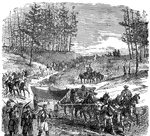
Pontoon Bridge
"The Pontoon bridge 'On The March'- the pontoon wagons on their way from Aquia Creek to the Rappahannock.…

Mahaska Crew
"The crew of the United States gunboat Mahaska, Captain Foxhall A. Parker destroying the water…

Drury's Bluff
"Drury's Bluff, a Confederate position on the James River, near Richmond, Va. The principal Confederate…
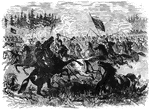
Hand-to-hand Combat
"Desperate hand-to-hand combat between Federal cavalry, commanded by General Averill and the daring…

Dutch Gap Canal
"Blowing out of the bulkhead of the Dutch Gap Canal, James River, Va., January 1st, 1865. At twelve…
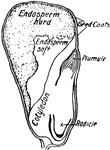
Kernel of Corn
Cross-section of a kernel of corn. Food is stored in the cotyledon and in the endosperm which surrounds…
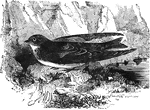
Bank Swallow
The bank swallow (also known as the sand martin) lives in large communities, often of several hundred…
